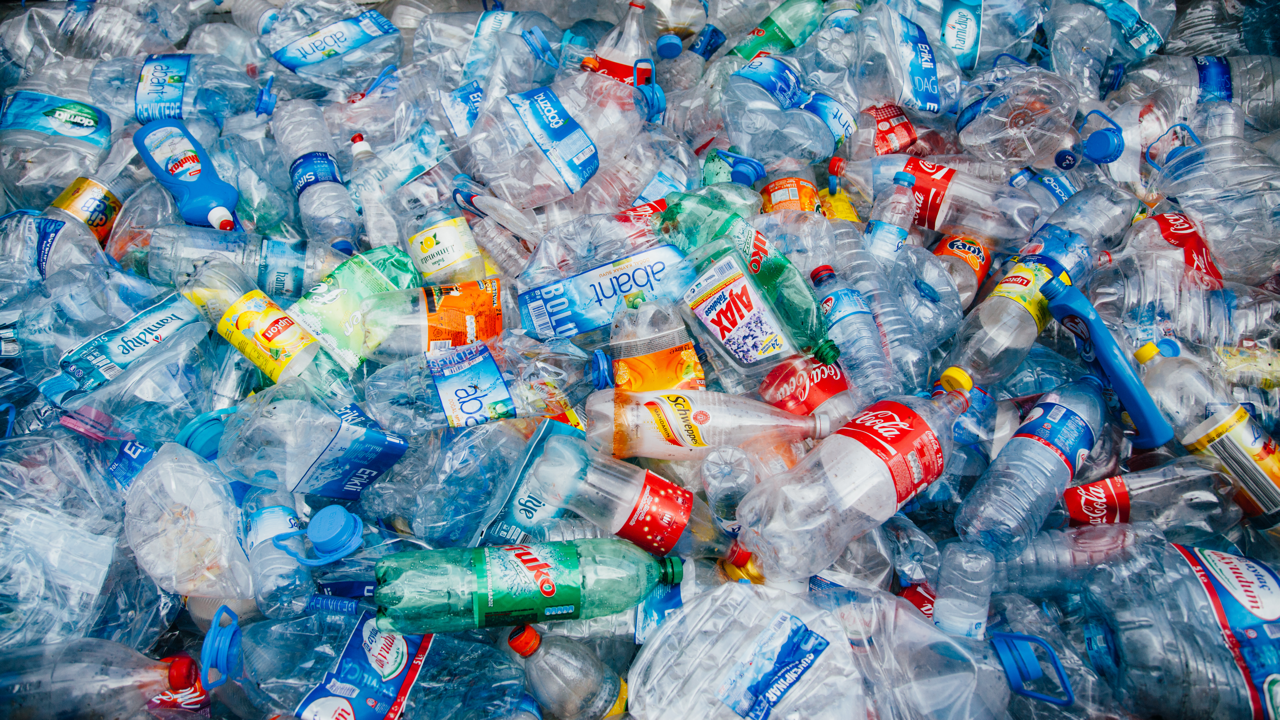Between regulations, market demands, and corporate initiatives, when it comes to sustainability, companies can no longer afford to just “talk the talk.”
Companies are realizing their business models are dependent on it. And as consumers, we’re feeling the impact of natural disasters and rising temperatures on our environment. I experienced this firsthand when I was evacuated a few years ago due to fires in Southern California, which are becoming more and more frequent.
It’s going to take a village to create more sustainable business models and products, so we decided to benchmark the current state of sustainability. After all, if you don’t know where you are on the journey, you can’t get to where you want to go.
In 2019, we ran our first State of Sustainability survey. Response was low and commitment to sustainability was not widespread. Those taking action on sustainability goals were even lower. So, we decided to update, and re-run the survey earlier this year. And, it was refreshing to see the response.
We wanted to know: has the commitment to sustainability grown in the last few years? Has it dropped, due to competing priorities? Are companies actually spending money to make this a reality and not just a feel-good marketing campaign?
The good news is, things have changed. Our 2022 survey received almost 500 respondents. And the participants represented a broad range of industries and job functions. In fact, 85% of respondents were at a manager level role or higher, indicating that sustainability is coming from the top-down.
To me, this signifies a few things. Sustainability initiatives are spread across industries, not just a few. Businesses now understand that no matter what they do, or what products they produce, they can have an impact on our planet.
The job function data also indicates to me that there isn’t one person who’s concerned with sustainability at companies. It is a theme that spans departments and roles.
It reminded me of my conversation with Jan Tharp, the CEO of Bumble Bee, on the Beyond the Shelf podcast, where she talked about the need for sustainable business models – because if they overfish, they won’t have more product to sell. Sustainability isn’t just a nice to have, it’s a need to have.
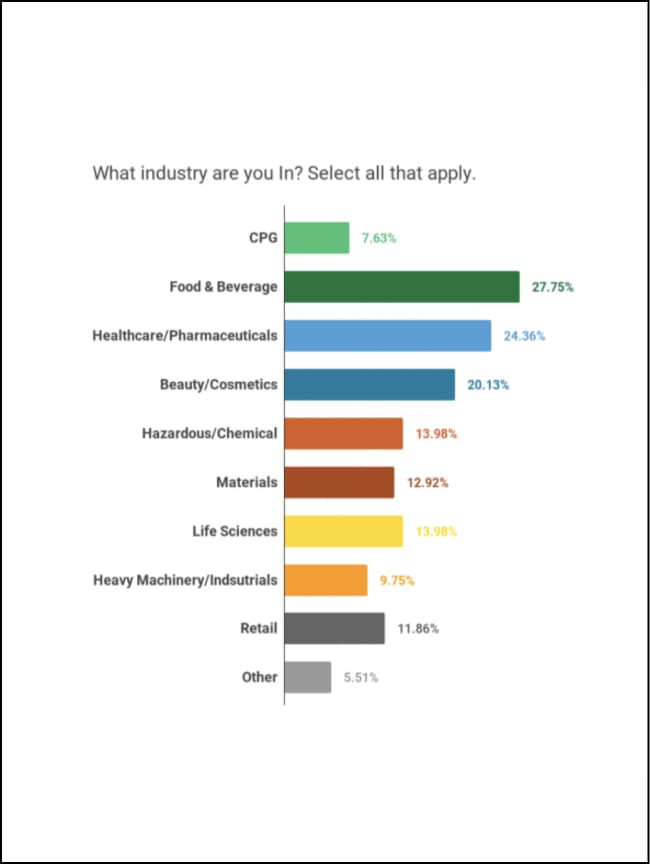
Companies Are Investing In Sustainability
The data also showed that companies are putting their money where their mouth is when it comes to investing in sustainability initiatives. In 2019, just 32% of survey respondents had a budget for sustainability.
Now, in 2022, almost 80% of respondents said they have a dedicated budget.
Financial commitment is an extremely promising indicator of sustainability commitment.
Companies are not just focused on setting goals, but delivering on those goals. It’s no longer just something “nice” to do, but now directly correlates with top-line growth and business model innovation.
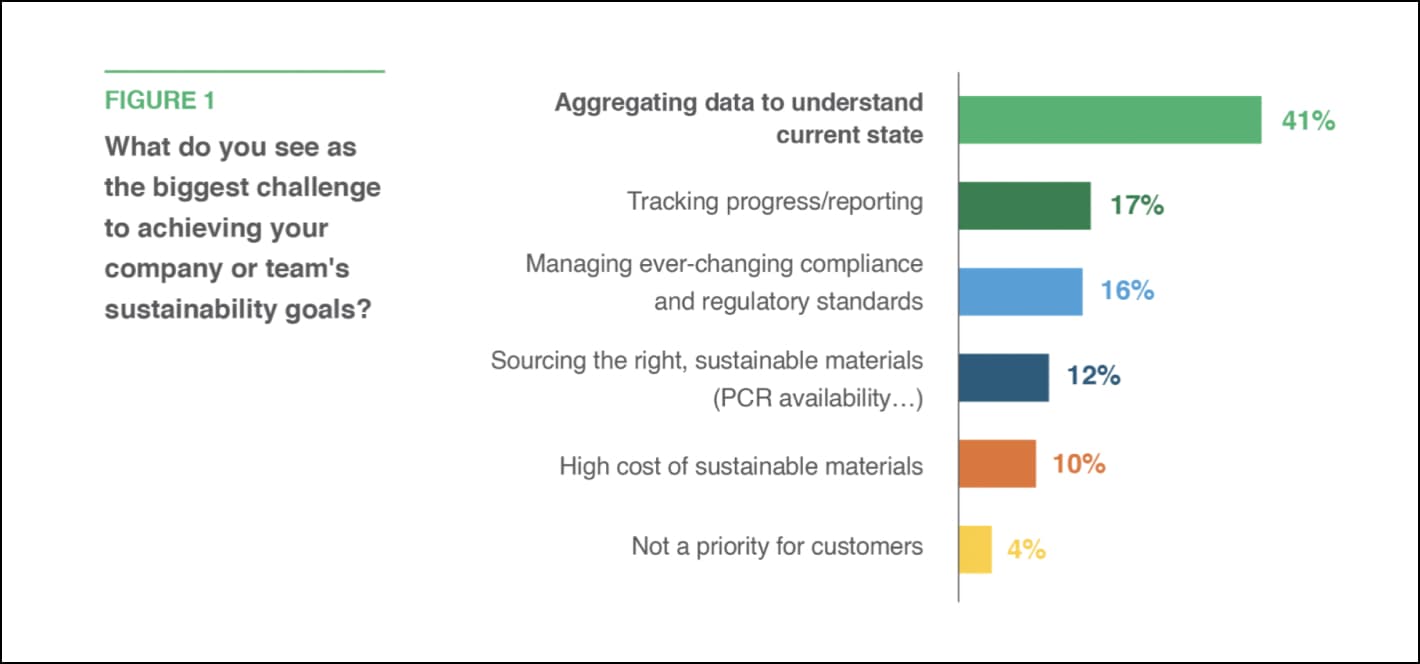
What’s Driving Sustainability Initiatives?
So, why are companies making these financial commitments?
There are multiple factors at play that influence the top and bottom line of businesses – and our data shows these initiatives are being driven from the top down.
- 44% of respondents said “Executive Leadership” is driving sustainability.
- 42% said “Market Expectations” or conscious consumers are demanding more sustainable products and practices.
- And, 32% and 31% said employees and investors (respectively) are what is driving sustainable change.
In addition to these drivers, 25% said government incentives are pushing change.
With more and more government regulations being implemented globally, companies are having to manage their impact more frequently, and with more accountability or face heavy fines.
A Lack Of Data Is Still Preventing Action
While the commitment to sustainability is high (90%), the biggest challenges remain collecting the right data to benchmark current state and track progress/reporting.
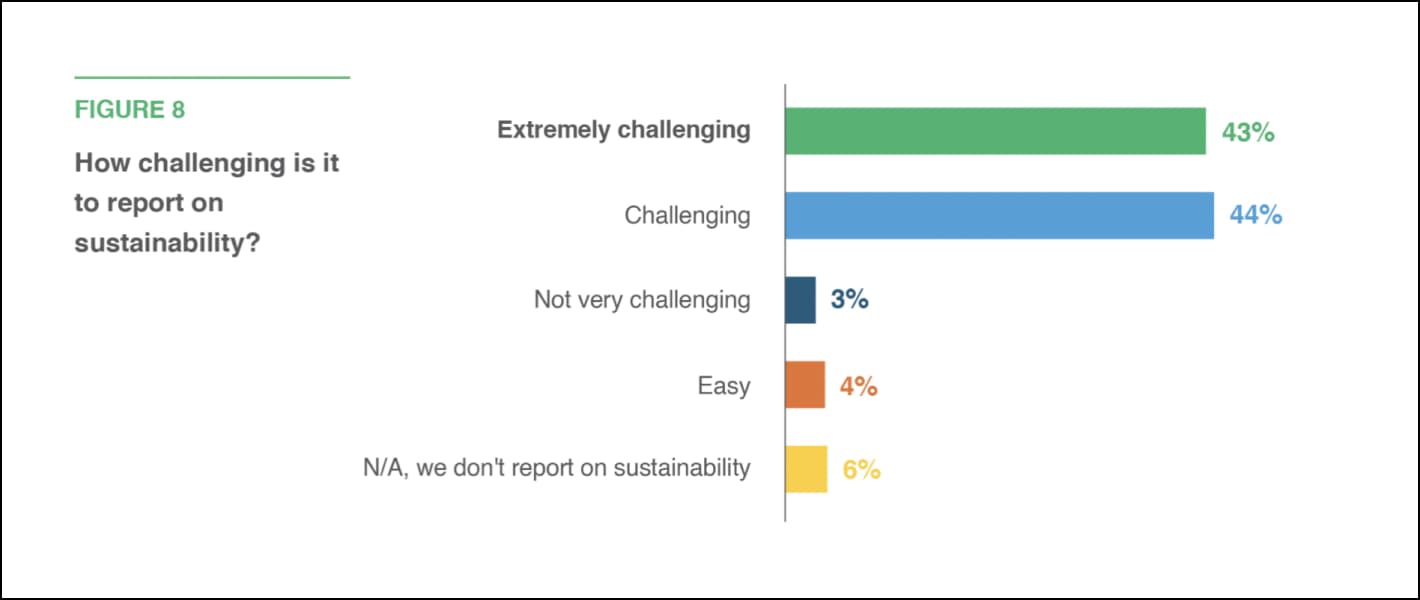
In fact, 88% said reporting was “challenging or extremely challenging.”
Despite it being challenged, companies are reporting on sustainability more frequently.
And, due to the drivers I mentioned above, demand for transparency from stakeholders is growing, along with reporting complexity.
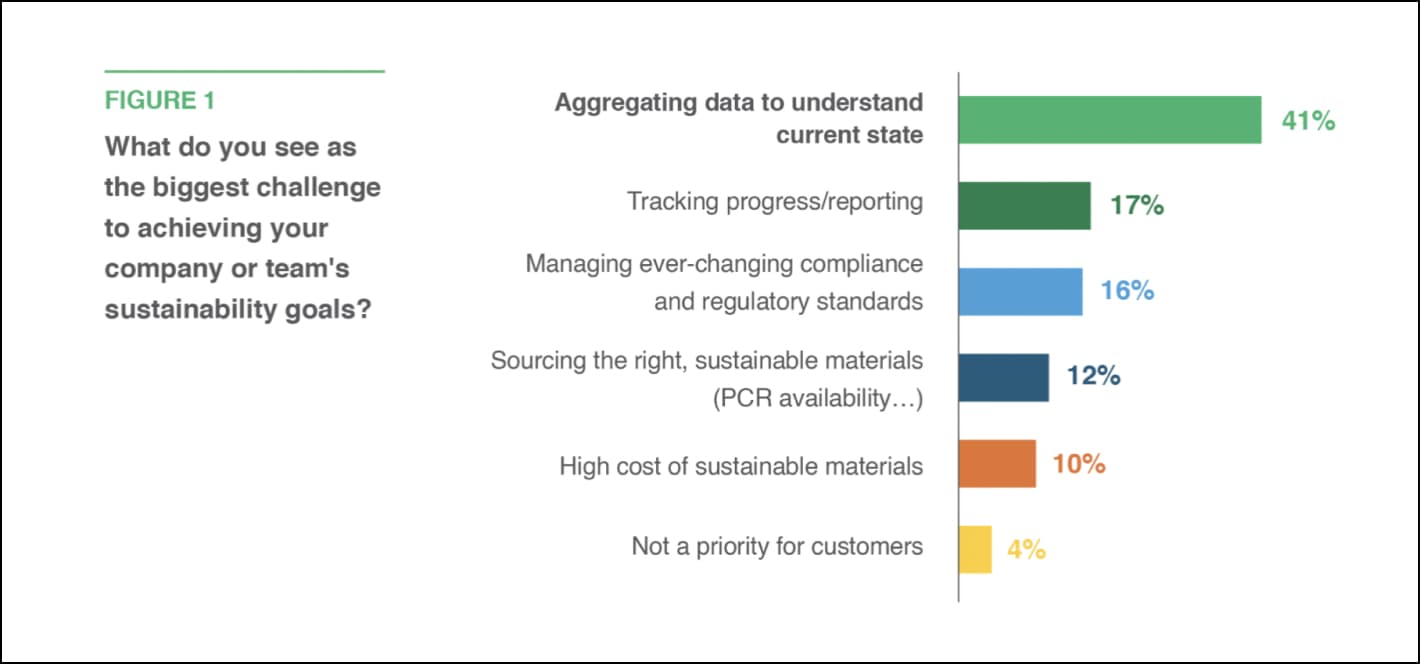
Bridge The Data Gap Between Ambition And Action
So, how do you tackle making sustainability a reality while dealing with market challenges like increased demand, supply chain complexity, and the need for cost optimization with a looming recession?
The answer: companies need to take control of their data with a spec-first approach.
From our survey data, we wrote The State of Sustainability Report.
In it, you’ll find more insights from the data we collected, but also the critical steps you can take to make your sustainability goals a reality. We also highlight case studies of companies doing this today.
And the best part, it takes four steps–not 500.
Because at Specright, we believe in simplifying the complex. Sometimes the biggest challenges require the simplest solutions in order to be – you guessed it – sustainable.
Explore More Blogs
Get Started
With Specright’s Solution Suite, you can digitize, centralize, and link your specification data to drive efficiencies, intelligence, traceability, and collaboration within your organization and across your supply chain network.

